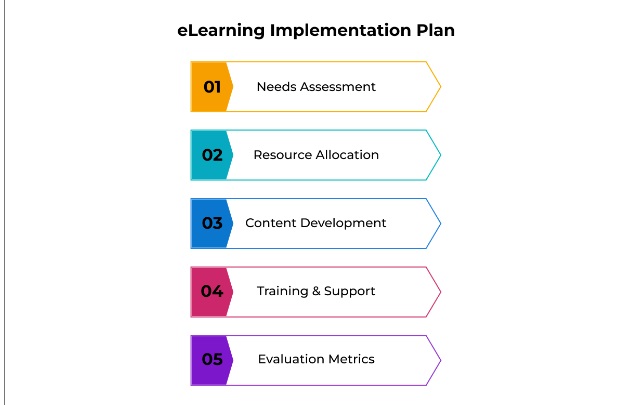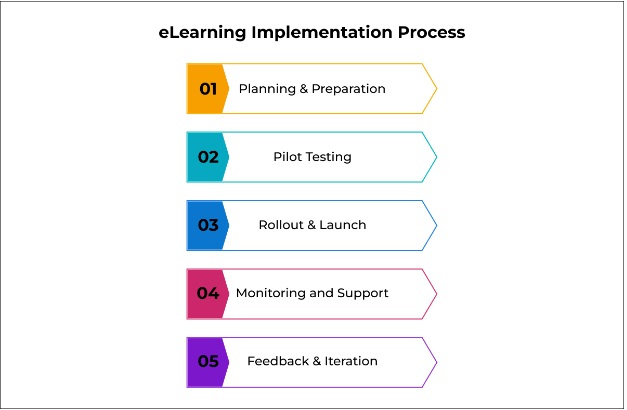The rise of eLearning is dramatically transforming the educational landscape, offering flexible and accessible learning opportunities for a diverse array of learners. Utilizing electronic technologies like the internet, computers, and smartphones, eLearning allows students and professionals to access a wide variety of educational resources and courses at their own pace and convenience. This shift towards digital learning reflects the increasing demand for continuous education and professional development in a fast-paced, globalized world. As the need for flexible learning solutions grows, eLearning has become a vital tool for organizations and individuals alike.
As of 2023, the global eLearning market was valued at over $315 billion and is expected to reach $645 billion by 2030, growing at a compound annual growth rate (CAGR) of 9.2%. Over 72% of companies report that eLearning provides a competitive advantage by helping employees keep up with new trends and technologies. Furthermore, 90% of students prefer digital education methods due to the flexibility and personalized learning paths they offer. These statistics highlight the critical role eLearning is playing in both corporate and academic settings and underscore the necessity for its thoughtful and strategic implementation.
What is eLearning?
eLearning refers to the use of electronic technologies to deliver educational content and facilitate learning beyond the traditional classroom setting. This mode of learning leverages the internet, computers, tablets, or smartphones, enabling learners to access a wide array of educational resources and courses at their own pace and convenience. eLearning can encompass various formats, such as online courses, webinars, virtual classrooms, and interactive tutorials. It provides flexibility and accessibility, allowing learners to choose the time and place of their learning experience, often leading to more personalized and effective education. The growing popularity of eLearning is driven by advancements in technology and the increasing demand for continuous education and professional development in a globalized world.
Best Practices for eLearning Implementation
Implementing eLearning solutions can transform the educational landscape by enhancing accessibility, flexibility, and engagement. However, ensuring successful implementation requires strategic planning, execution, and ongoing assessment. Here are some best practices to follow for a successful eLearning implementation.
eLearning Implementation Plan
Developing a comprehensive eLearning implementation plan is crucial to ensure a smooth transition and successful integration into the existing educational framework. The plan should encompass the following steps:

- Needs Assessment: Identify the specific learning needs and goals of the target audience to tailor the eLearning solution accordingly.
- Resource Allocation: Determine the necessary resources, including budget, technology, and human resources, required for the implementation process.
- Content Development: Create or curate high-quality, engaging, and interactive content that aligns with the learning objectives.
- Training and Support: Provide training and support for educators and learners to familiarize them with the new Education tools and platforms.
- Evaluation Metrics: Establish clear metrics to evaluate the effectiveness and impact of the eLearning program, allowing for continuous improvement.
eLearning Implementation Process
The eLearning implementation process involves a series of steps to ensure successful integration and adoption by the learners. The key steps include:

- Planning and Preparation: Develop a detailed implementation timeline, assign roles and responsibilities, and prepare all stakeholders for the transition.
- Pilot Testing: Conduct a pilot test of the eLearning solution with a small group of learners to identify potential issues and gather feedback.
- Rollout and Launch: Launch the eLearning program to the broader audience, ensuring all technical aspects are functioning correctly.
- Monitoring and Support: Continuously monitor the eLearning program’s performance and provide ongoing support to address any challenges faced by learners or educators.
- Feedback and Iteration: Gather feedback from users to identify areas for improvement and make necessary adjustments to enhance the overall learning experience.
Challenges in Implementing eLearning
Implementing eLearning can be transformative, but it comes with its own set of challenges that organizations must navigate to ensure success. Understanding these challenges and preparing to address them is crucial for the smooth integration of eLearning solutions.
- Technical Limitations: Not all learners or institutions may have access to the necessary technology or internet connectivity required for eLearning. This digital divide can hinder the effectiveness of eLearning programs and leave some students behind.
- Resistance to Change: Educators and learners may be resistant to adopting new technologies and methodologies. This resistance can stem from a lack of understanding, fear of change, or discomfort with digital tools.
- Content Quality and Relevance: Developing or sourcing high-quality, engaging, and relevant content that meets the diverse needs of learners is a significant challenge. Poorly designed content can lead to disengagement and reduced learning outcomes.
- Training and Support: Providing adequate training and ongoing support for both educators and learners is essential for the successful implementation of eLearning. Without proper training, users may struggle to navigate and utilize the eLearning platform effectively.
- Assessment and Evaluation: Measuring the effectiveness of eLearning programs can be complex. Traditional assessment methods may not be suitable, and developing appropriate evaluation metrics requires careful consideration.
- Data Security and Privacy: Ensuring the security and privacy of learner data is a critical concern in eLearning environments. Organizations must implement robust measures to protect sensitive information and comply with data protection regulations.
- Scalability and Integration: As organizations grow, eLearning solutions must be scalable and capable of integrating with existing systems and processes. Failure to plan for scalability and integration can lead to technical difficulties and inefficiencies.
Conclusion
eLearning represents a transformative shift in education, offering unparalleled flexibility and accessibility to learners worldwide. As the eLearning market continues to grow, fueled by advancements in technology and the integration of AI in EdTech, it becomes increasingly essential for organizations and educators to implement these solutions thoughtfully and strategically. Addressing challenges such as technical limitations, resistance to change, and ensuring content quality will be key to harnessing the full potential of eLearning. To stay ahead in this dynamic landscape, consider leveraging Codiste’s AI development solutions, which are designed to enhance eLearning experiences and drive continuous educational and professional growth. Explore how Codiste can help you optimize your eLearning initiatives and unlock new possibilities for effective and personalized learning.

